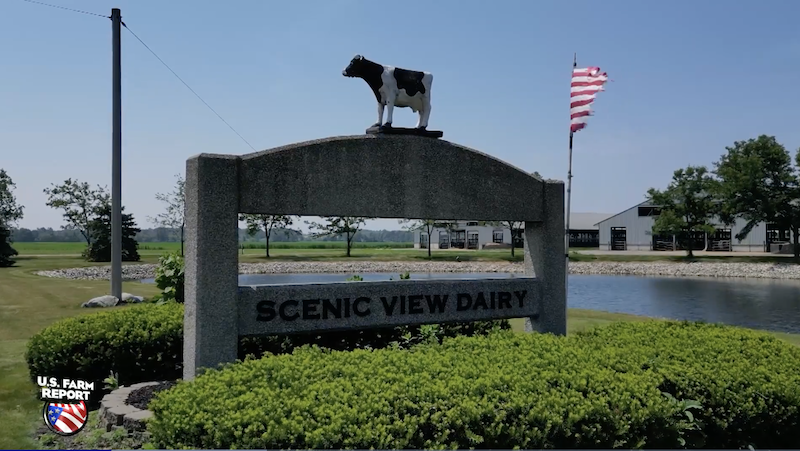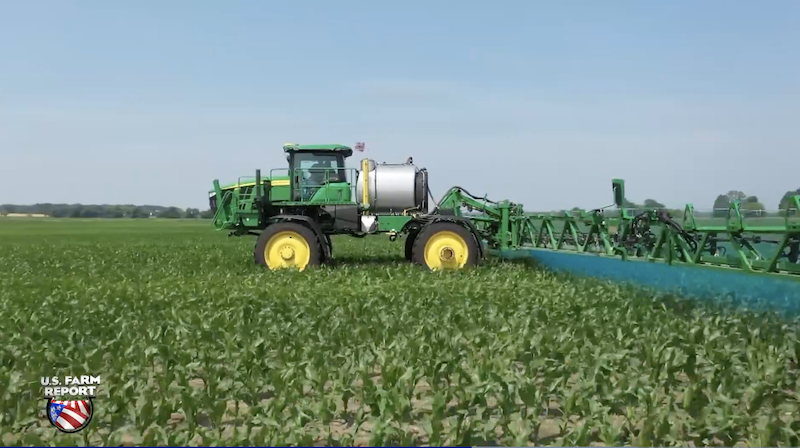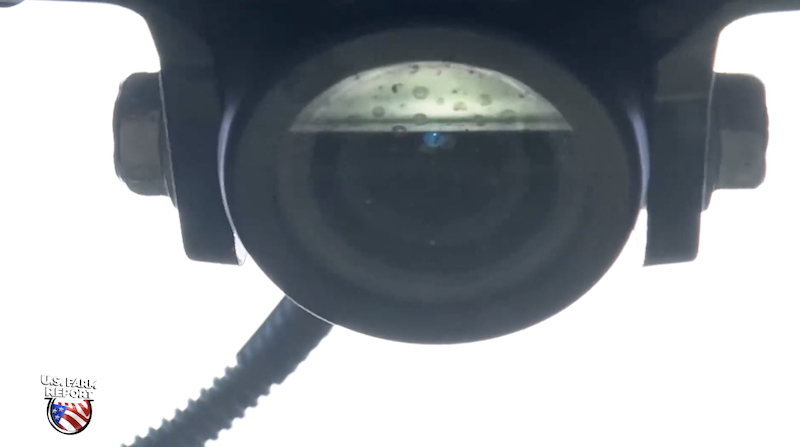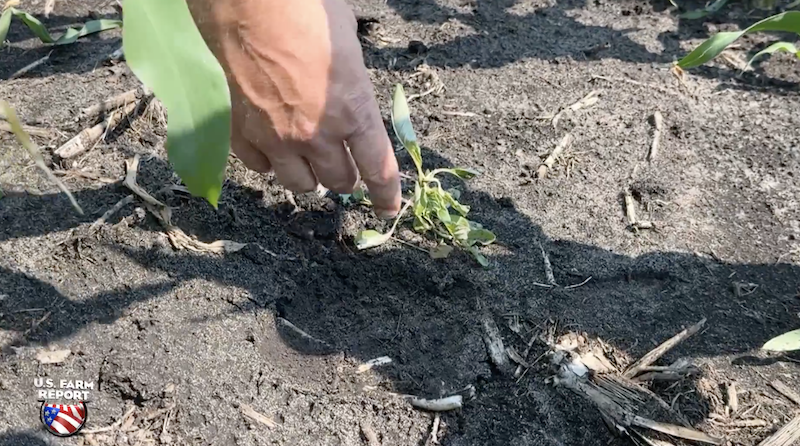How this technology helped a Michigan farmer reduce his herbicide use by 60%

Scenic View Dairy, located south of Holland, Michigan, is always busy. This time of year, with 2,000 cows being milked and thousands of acres of farmland in the field, the place is busier than ever.
“The crop is looking pretty good this year,” says Brian Geerlings, partner at Scenic View Dairy. “We had a little bit of a slow start with a cooler spring, but now we’ve got some heat that’s really getting the crop growing and it’s looking good.”
Geerlings says the weather presents a challenge for the farm every year, but his other biggest challenges as a dairy producer are milk prices and finding enough workers.
“Labor has obviously been a challenge. After the Covid pandemic, we didn’t seem to be able to get people to work as well,” Geerlings says. “Pricing (for milk) has been a challenge. There have been ups and downs. It’s not fun when we can’t pay our bills. And that weighs heavily on us. So in situations like this, pricing is very important.”
The reality for dairy producers is that milk prices have been below production costs for years. Geerlings says prices have recovered recently, making the dairy industry a little more optimistic.
That’s good news for Scenic View Dairy, because the partners take milking cows and pumping out nearly 40 million pounds a day seriously. But Geerlings says the operation is much more than a dairy farm. The producers are progressive, proactive and always looking for the best technologies.
“We’ve done a lot of things over the last 20 years,” he says. We’ve installed anaerobic digesters, drones to spray the fields and now this new See & Spray technology with John Deere, which I think has been very valuable. There are other technologies we looked at and then discarded, either because they weren’t a good fit for our operation or because they didn’t offer a good ROI or payback.”
Geerlings says they are definitely not afraid of technology. From converting methane gas into natural gas and feeding it into a pipeline to developing new methods of spraying fields, the partners are always looking for ways to become more efficient and are often the first to adopt new technologies.

One of the farm’s recent new purchases was a sprayer. Rather than purchasing a new sprayer, the dairy opted to purchase a used sprayer but added a precision upgrade kit with See & Spray.
“We work with some weeds that are herbicide resistant. It’s really no secret that they exist, and some of them are a problem for us,” he says. “But we really wanted to control costs. The weeds are not widespread, they only occur in certain areas or certain spots in the field. So to spray the entire field broadly would have been very costly.”
He says weed control programs can cost between $20 and $30 per acre, but because this technology can identify and spray only the weeds that are actually present in a field, even greater savings are possible than he thought possible.
“I sprayed a few fields last week and I think one field had 26% sprayed. Another field had about 43% sprayed. So there are some fields with higher weed pressure and some with lower. But in both cases the benefits add up quickly.”
He says he has reduced his herbicide use by 60% in some fields and even more in others.
“We would have been happy with a 50% reduction,” says Geerlings. “We are exceeding our expectations by a long way, which of course makes the technology even more profitable. It works really well for us.”

These herbicide cost savings surprised even the local retailer.
“He showed us some maps and he got 34% product application on this one field. So he’s saving a lot of money,” says Josh Rabbers, agricultural sales manager for GreenMark Equipment in Michigan. “I think this is a big turning point for what we’re going to see in the future as we save chemicals and have benefits by only spraying these specific problem spots in the field.”

Geerlings says it is impressive to watch the sprayer at work.
“It’s amazing that the cameras on the booms can see weeds that I, as an operator, can’t see,” he says. “These machines are so wide; they’re 120 feet wide these days. You have to be able to see 60 feet in any direction from the seat. And to see weeds that are sometimes an inch or less high, you can’t possibly do a good job of spot spraying.”
What really impressed him is seeing the nozzles turn on and off as the camera detects and sprays a weed. And that’s exactly how the technology works. Each camera acts as a pair of eyes, finding weeds so small that not even Geerlings or the sprayer driver can see them.
“It has cameras along the boom and looks forward to where the weeds are. It sprays the product only on the weeds there,” says Rabbers.

For a dairy near Lake Michigan, the savings aren’t just about money. Reduced use of herbicides means applications are more environmentally friendly than ever before.
“My father always said that farmers were the first environmentalists, so it really fits with our philosophy of not using more products than absolutely necessary,” adds Geerlings.
Geerlings is able to achieve significant cost and environmental savings while discovering even more opportunities on the farm, making Scenic View Dairy a true pioneer.



